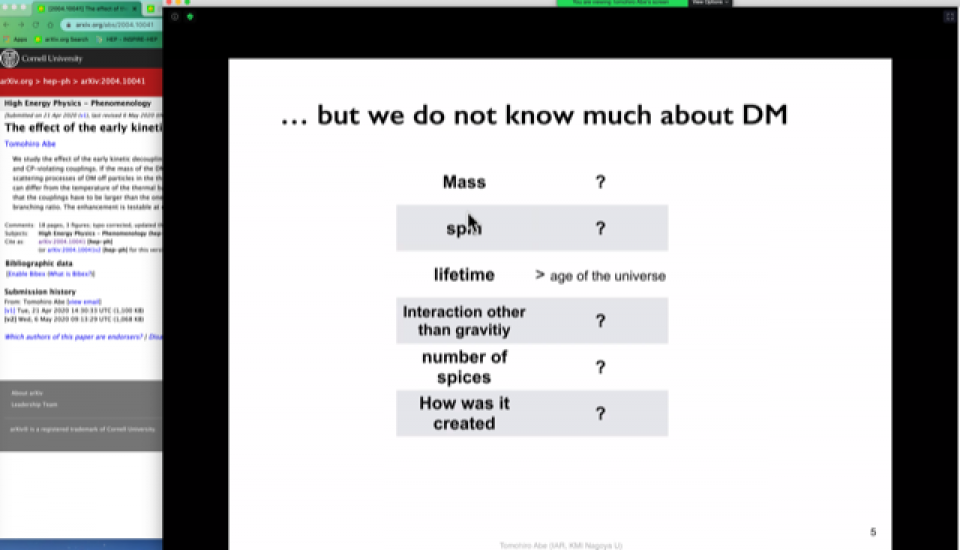Dark Matter Working Group Seminar on June 12, 2020
Among the numbers of dark matter (DM) scenarios, Weakly Interacting Massive Particle (WIMP) is one of the best-studied particles. It attracts special attention because of its beautiful mechanism to achieve the relic abundance of dark matter which is referred to as the thermal freeze-out. In the early Universe, the annihilation of the WIMP into the standard model (SM) particles and its inverse process are frequent enough to sustain the thermal equilibrium. At a certain point, WIMP decouples from the thermal bath then its number density, which is directly related to the relic abundance, is fixed. The strength of the coupling between WIMP and the SM sector determines the annihilation frequency.
The same coupling is also responsible for the energy transfer between the SM particles and WIMP. The constraints on that scattering cross-section (i.e., the energy transfer between two sectors) have already been severely constrained by direct detection experiments. This motivates us to consider such a model that the coupling is so small and the relic abundance is achieved by a resonant annihilation at a certain mass. In this way, we can satisfy the requirements from the results of direct detection experiments.
The small coupling between the SM sector and WIMP could lead to a non-equilibrium between them around the freeze-out epoch. Such a situation is referred to as the kinetic decoupling. The kinetic decoupling before the freeze-out affects the calculation of the relic density, which is a crucial part of the WIMP scenario. In this talk, Dr. Abe clarified the effect of the kinetic decoupling in terms of the coupling constant taking two examples of fermionic and scalar DM in the Higgs portal scenario. He calculated the freeze-out process in detail and showed that the scattering cross-section, which is measured at direct detection experiments, should also be different from the case where assumes a complete thermal equilibrium.
We could see the signature of such DM in near-future experiments. We should carefully work on the synergy between different types of experiments in this high-precision era of DM search.

